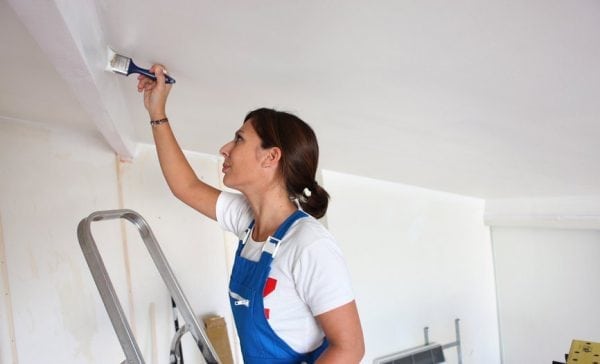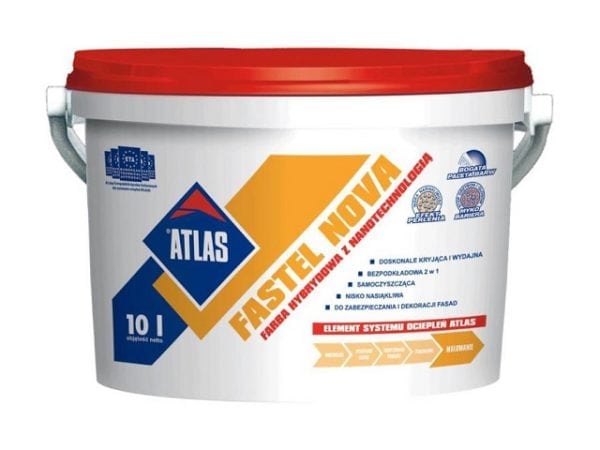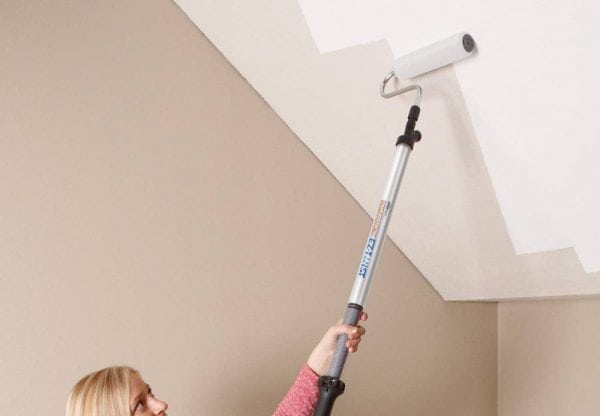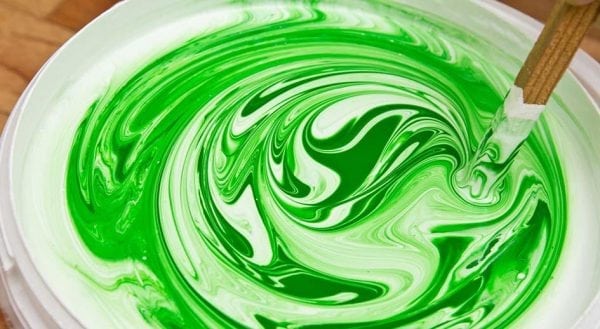The construction materials market has a fairly extensive range of paints and varnishes. There you can find tools for working inside and outside the room, for treating wood, concrete and other surfaces, based on oils, latex or silicone. Of all these varieties, silicone paint stands out. What is she like? How does this tool stand out among its "brothers"?
- Features of the tool
- Benefits
- disadvantages
- Application process
- How much paint do you need?
- Variable consumption

Features of the tool
The coloring agent is an aqueous emulsion of organosilicon resins. It is safe for humans in any condition (liquid or hardened). According to one opinion, at first only artists used silicone paint. However, over time, she lost her popularity among them. But on this tool industrialists drew attention. It was they who found out that it is suitable for almost all works (on wood, for exterior and interior painting, etc.).
We can say that silicone paint is one of the varieties of water-based dyes, as well as acrylic. Both that and another belong to water dispersible compositions.
to contents ↑Benefits
Water based paint has many advantages. Here is some of them:
- Easy to apply on any surface, whether it be walls, ceilings, structures made of wood, concrete, etc. It has good adhesive properties.
- It can be used for painting on unprepared surfaces. This type of dye will easily hide cracks, roughness and other defects in the walls and ceiling.
- The coating tolerates temperature changes well.
- Using special colors, you can create almost any shade.
- Among its useful properties are vapor and gas permeability.
- Repels water. Thanks to this feature, it is suitable for use in the bathroom.
- On the surface painted with silicone paint, fungus, bacteria and insects will not appear.
- Silicone facade paint does not crack. This is because there is no surface tension in it.
- Dust and dirt do not accumulate on the painted surface.
- The paint is environmentally friendly. When working with it, you can not use protective equipment.
- This dye easily tolerates exposure to direct sunlight.
And the most pleasant advantage is a rather long service life. It is about a quarter century.
to contents ↑disadvantages
Silicone paints have several disadvantages:
- Cost. Perhaps with increasing popularity, the price will drop. But now she is fully justified.
- Due to the gas permeability of the coating, the metal becomes vulnerable to corrosion. In view of this, when painting products made of reinforced concrete, it is necessary to protect the metal, otherwise it will begin to rust. By the way, now on sale there are silicone paints, which include anti-corrosion additives.
Application process
Painting of walls, ceiling and any other surfaces begins with their preparation. This process does not depend on the purpose of the room. It can be a bathroom, and a living room, and a facade.
- Both during internal and external works, it is necessary to remove the initial coating, dirt and dust from the surface to be painted. If necessary, it can be thoroughly washed and dried. Although, as mentioned above, there is no great need for such thorough preparation.
- Paint will hide minor defects. However, more cracks will have to be putty. In this case, the solution should fill in all the voids.
- As soon as the base for work is ready, it is recommended to cover it with a primer. This procedure will improve the adhesion of the material to the surface and reduce its consumption.
It is most convenient to paint with a spray gun, but it costs a lot. For this reason, it is better to use a conventional roller. The workflow for indoor and outdoor work is identical. The same can be said about painting various surfaces: the sequence of processing does not depend on whether it is a ceiling, walls, wooden products, a bathroom or a corridor.
- First you need to protect those elements that do not need to be painted. For these purposes, you can use a special masking tape. If you need to paint the walls or ceiling, the floor can be covered with plastic wrap.
- In most cases, the paint is ready for use. But sometimes, to get the right shade, you have to use a color scheme. The resulting solution must be mixed well to get a homogeneous mass.
- Pour some paint into a prepared container. It is better to take a special roller tray. The roller needs to be wrung out well - thanks to this it will be able to soak well.
- Walls are recommended to be painted from top to bottom. The ceiling in the room must be painted from the corner to the window on the opposite side. The paint layer should be as thin as possible. It is advisable to prevent the appearance of drips.
- Using a brush, paint over hard-to-reach spots.
- If there are any defects on the walls or ceiling, you can apply a second layer. This should be done after the first is completely dry.
A few tips:
- When choosing a paint, you need to pay attention to its composition. It is desirable that it contains as little chemicals as possible.
- A product with an expired shelf life should not be used for both outdoor and indoor use.
- Quality products will not be cheap. In order for the paint to withstand the influence of external factors, for example, water in the bathroom, it must contain exclusively high-quality components.
- If you want to paint a metal surface, you need to choose a dye with a high percentage of electrical conductivity.
- The walls in the bathroom should not be wet. No need to start work in wet or too cold weather. Minus temperature and high humidity will cause defects.
How much paint do you need?
To correctly determine the consumption of the coloring composition, you need to know the area of the room. For example, you need to paint the bathroom. Measure the width and length of each surface to be painted and calculate the area from them. The result should be multiplied by the estimated paint consumption per 1 m2.
In most cases, the ceiling takes about 1 liter per 10 m2. Sometimes the consumption decreases, and the same amount of dye is enough for about 15 m2.
The consumption of paint on the walls is 1 liter per 10 m2. It can be reduced by pre-coating the surface with an acrylic based primer.
Consumption of water-based silicone paint is largely determined by the nature of the surface to be painted. Smooth, ideally even or primed surfaces will take much less money. When working with concrete or untreated wood, consumption will increase.
An important role is played by the tool that will be used at work. Highest consumption when using a long-haired or foam roller. Therefore, it is recommended to use a tool with medium-length bristles.
Do not forget about the quality of the dye. If you buy a high-quality water-based paint, you can do it by applying in 2 layers.
to contents ↑Variable consumption
Almost always, the flow rate is indicated on the packaging along with data such as dye density, color and drying time. Here are some examples.
- Silicone water emulsion of the highest quality. It is applied on a mineral base, natural stone, wood or old coatings of acrylic, acrylic-silicone and structural dyes. In order to paint 1 m2 of the surface in one layer, you need about 160-180 ml of the product.
- Acrylic-silicate-silicone with ceramics in its composition. Like the previous type, it is applied to mineral substrates, wood and old coatings from various types of dyes, including structural ones. More suitable for outdoor use. Consumption - 180 ml per 1 m2.
- Top quality silicone with water repellent properties. It copes with moisture, for example, in the bathroom. Protects facades and wood products from mold and fungus. About 1 ml of dye will be spent on 1 m2.
So, silicone paint is understood as one of the types of water-based emulsion dyes. It is created on the basis of water and special resins. It is used for painting almost all surfaces, including walls and ceilings in the bathroom, wood and concrete products, etc.







